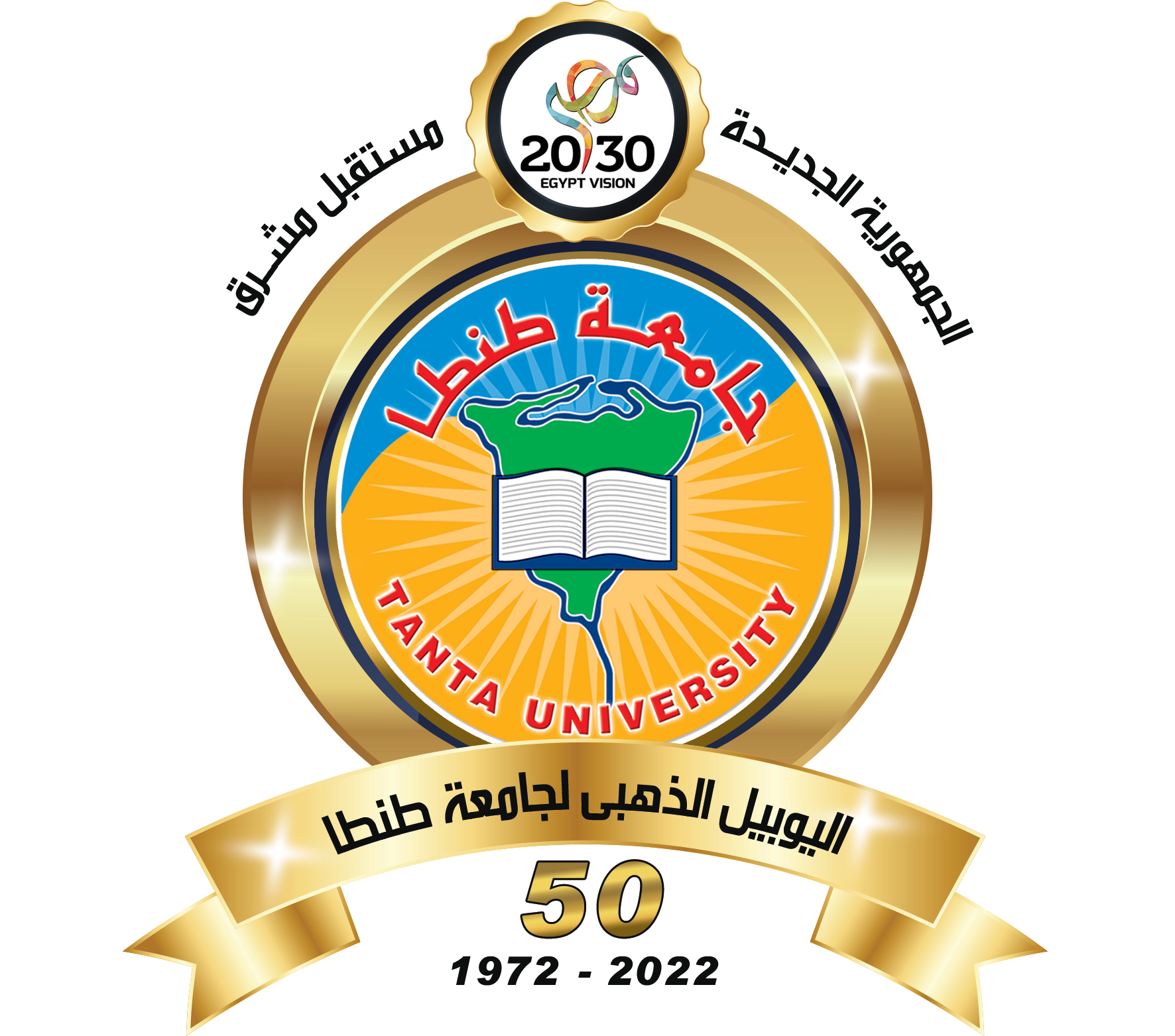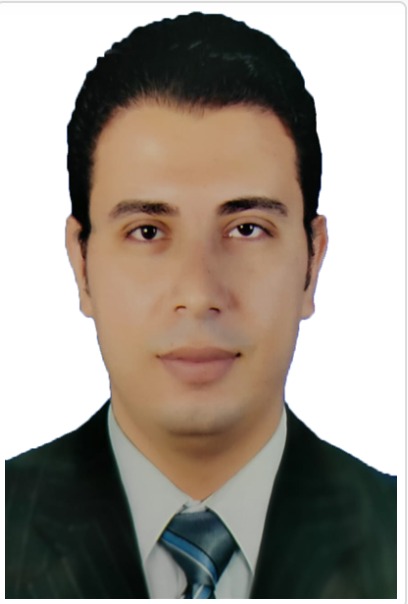
|
Boosting the interfacial evaporation rates in hemispherical solar distillers using the optimized thickness of high porosity black sponge layers
|
|
|
Mohammed El Hadi Attia1, Abd Elnaby Kabeel2,4, Mohamed Abdelgaied2, A .S. Abdullah5,6
|
|
|
1Department of Physics, Faculty of Science, University of El Oued, 39000 El Oued, ALGERIA 2Mechanical Power Engineering Department, Faculty of Engineering, Tanta University, Tanta, EGYPT 3Mechanical Power Engineering Department, Faculty of Engineering, Horus University, New Damietta, EGYPT 4 Faculty of Engineering Delta, University for Science and Technology, Gamasa, EGYPT 5Mechanical Engineering Department, College of Engineering, Prince Sattam bin Abdulaziz University, Saudi Arabia. 6Faculty of Engineering, Tanta University, Tanta, Egypt
|
|
|
kabeel6@hotmail.com
|
|
|
1614
|
|
|
Current work aims to achieve the highest cumulative productivity of hemispherical distillers. This was done by utilizing the high porosity black sponge layers to achieve the highest evaporation rates inside the hemispherical distillers. Since the hemispherical solar distiller has the advantage of having a hemispherical cover with a large surface area exposed to the surrounding wind speed, which reduces its temperature and thus improves condensation rates. So, incorporating the high porosity black sponge layer with a hemispherical solar distiller represents a good choice to achieve the highest rates of the evaporations and condensations within the hemispherical solar distillers. To obtain the optimized thickness of high porosity black sponge layers that achieve the highest interfacial evaporation rates, four different thicknesses of the black sponge layers (1, 2, 3, and 4 cm) were studied and compared to reference distiller. The results showed that the utilization of high porosity black sponge layers with thicknesses of 30 mm represents a good choice to achieve the highest hemispherical distillers performance. Where it was found that the use of the sponge layers with thicknesses of 30 mm improved the accumulative yield from 4150 ml/m2 day for reference distiller case to 7150 ml/m2 day with improvement of 72.29%. Also, the improvement in the thermal and exergy efficieces for utilizing the sponge layers with thicknesses of 30 mm reached 70.53% and 512.87%, respectively. Moreover, the use of high porosity black sponge layers reduced the distillate cost by 41.67% compared to the reference distiller.
|
|

|
A comprehensive thermo-economic analysis and optimization of tubular solar distillers with v-corrugated basin and reflective mirrors
|
|
|
A. E. Kabeela,b ,Mohamed Abdelgaieda,, Ayman Refat Abd Elbara, Gamal B.Abdelazizc, Swellam W. Sharshird , A.S. Abdullahe,f ,Nouby M.Ghazalyg
|
|
|
a Mechanical Power Engineering Department, Faculty of Engineering, Tanta University, Tanta, EGYPT. b Faculty of Engineering Delta, University for Science and Technology, Gamasa, EGYPT c Mechanical Department, Faculty of Technology and Education, Suez University, Suez, Egypt d Mechanical Engineering Department, Faculty of Engineering, Kafrelsheikh University, Kafrelsheikh 33516, Egypt eMechanical Engineering Department, College of Engineering, Prince Sattam bin Abdulaziz University, Saudi Arabia. f Faculty of Engineering, Tanta University, Tanta, Egypt gMechanical Eng. Dept., Faculty of Engineering, South Valley University, Qena 83523, Egypt Email: mohamed_abdelgaied@f-eng.tanta.edu.eg; kabeel6@f-eng.tanta.edu.eg;
|
|
|
kabeel6@hotmail.com
|
|
|
1615
|
|
|
This study aims to achieve the maximum possible benefit from the large receiving and condensation area that characterizes the tubular solar distillers, these by incorporating the best effective modifications to the design of this type of distillers, in order to achieve the highest freshwater productivity. This was done by incorporating the dual use of a V-corrugated basin and reflective mirrors in design of tubular distillers. To illustrate the influences of dual uses of V-corrugated basin and reflective mirrors on tubular distiller’s performance, the experimentations were conducted on two scenarios. In the first pilot test scenario, both the tubular solar distiller with V-corrugated absorber (TSD-VCA) and conventional tubular solar distiller (CTSD) were designed and tested at the same conditions. In the second pilot test scenario, both the tubular solar distiller with V-corrugated absorber and reflective mirrors (TSD-VCA&RM) and CTSD were designed and tested under the same conditions in Tanta city, Egypt. Also, the influences of basin seawater masses were studied. The results indicated that the dual use of V-corrugated basin and reflective mirrors (TSD-VCA&RM) represents the most effective modifications, which increase the cumulative productivity to 9.49 L/m2 day with 100.2% improvement compared to CTSD. Also, accumulative thermal and exergy efficiencies of TSD-VCA&RM reache 80.25 and 15.26%, with an improvement of 98.76 and 525.4%, respectively compared to CTSD. Furthermore, the economic feasibility illustrated that the dual use of V-corrugated basin and reflective mirrors are a very effective choice where it reduces the distillate water costs by 33.33% compared to CTSD.
|
|

|
Effect of different basin materials on the performance of hemispherical distiller with mirrors and energy storage material
|
|
|
A.E. Kabeel 1,2, Mohammed El Hadi Attia3, Fadl Abdelmonem Essa 4, Mohamed Abdelgaied 1, A .S. Abdullah5,6
|
|
|
1 Mechanical Power Engineering Department, Faculty of Engineering, Tanta University, Tanta, Egypt. 2 Faculty of Engineering Delta, University for Science and Technology, Gamasa, Egypt. 3 Department of Physics, Faculty of Science, University of El Oued, 39000 El Oued, Algeria. 4 Mechanical Engineering Department, Faculty of Engineering, Kafrelsheikh University, Kafrelsheikh 33516, Egypt. 5Mechanical Engineering Department, College of Engineering, Prince Sattam bin Abdulaziz University, Saudi Arabia. 6Faculty of Engineering, Tanta University, Tanta, Egypt. Corresponding authors information: A.E. Kabeel (kabeel6@f-eng.tanta.edu.eg)
|
|
|
kabeel6@hotmail.com
|
|
|
1616
|
|
|
Numerous studies are being conducted on solar desalination systems with creating new designs to improve the productivity. Hemispherical solar still has a relatively large throughput because of its large exposure and condensation surface area compared to the other distiller designs. To get the optimal conditions of the parameters that provide the highest productivity of the hemispherical still, three hemispherical basin stills were fabricated and tested. The experiments were performed in three stages: In the first one, the traditional hemispherical solar still THSS (a reference distiller) was compared by THSS with internal reflective mirrors (THSS-IRM). In the second stage, the effect of using different basin metals (THSS with basin metal of zinc (THSS-IRMZ) and basin metal of copper (THSS-IRMC)) with internal reflective mirrors was studied. In the third stage, the two distillers were investigated under using energy storage medium (30 g/L sand grains for each). The THSS with internal reflective mirrors, basin metal of zinc, and energy storage medium is abbreviated by THSS-IRMZSG. Also, THSS with internal reflective mirrors, basin metal of copper, and energy storage medium is abbreviated by THSS-IRMCSG. Moreover, THSS with internal reflective mirrors and energy storage medium is abbreviated by THSS-IRMSG. The results showed that the combination of using internal reflective mirrors, basin material (copper) and energy storage medium provided the best improvement of hemispherical distillation device. The maximum cumulative yield of THSS-IRMCSG was 11.9 L/m².day, while the reference distillation device gave a total yield of 4.65 L/m².day. So, the productivity was improved by around 156%.
|
|

|
Optimization of fungal enzymes associated with biodegradation of green plastic by some fungi from soil
|
|
|
Anwer S.M. El- Badry, Mohamed Yasser Bedawy , Noha Ahmed El- Sebaii and Metwally Abed El- Azeem Metwally.
|
|
|
Soil fungi, Green plastic, Cellulase, Lipase
|
|
|
m.metwally@science.tanta.edu.eg
|
|
|
1619
|
|
|
Optimization of fungal enzymes associated with biodegradation of green plastic by some fungi from soil
Anwer S.M. El- Badry, Mohamed Yasser Bedawy , Noha Ahmed El- Sebaii and Metwally Abed El- Azeem Metwally.
Two fungal species (Penicillium polonicum and Aspergillus niger) were isolated (from soil collected from Tanta city, Gharbia Governorate, Egypt.), Identified and selected for their ability to grow, degrade green plastic ( poly-vinyl alcohol.) and to produce Co- functional ( hydrolytic) enzymes on solid media.
Cellulase and lipase activities were higher than catalase enzyme. No clear zone detected for protease, laccase, amylase and urease. The optimum conditions for cellulose production were pH 5, at 30C and 6 days incubation and 1% PVC concentration for both fungi. While the best nitrogen sources were Potassium nitrate and Sodium nitrate for P. Polinicum and A.niger respectively. Lipase production showed thee pattern of cellulose production with the exception that the ammonium sulphate was the best nitrogen source for both fungi.
|
|

|
Effects of genetically modified sweet pepper, Capsicum annuum on litter decomposition dynamics by litter-bag method under greenhouses condition.
|
|
|
Mohamed F. Ageba, Lamiaa A. Sharra, Ahmed A. Al-Shenawi and Ensaf A. El-Gayar
|
|
|
Zoology Department, Faculty of Science, Tanta University
|
|
|
mohamed.ageba@science.tanta.edu.eg
|
|
|
1653
|
|
|
There are increasing reports about the risks and benefits of genetically modified (GM) crops and their impact on natural and agricultural ecosystems. This study investigates the effect of genetically modified crops on litter decomposition dynamics. The study was carried out in five greenhouses situated in three locations; Al Kamaleyah, Al Hayatim and Saft Turabin Al Mahala Al Kubra, Egypt. All greenhouses were cultivated with genetically modified (GM) sweet pepper Capsicum annuum resistance to cucumber mosaic virus (CMV) and non-genetically modified (NGM) sweet pepper. A total of 130 litterbags were placed at the two cultivated systems (GM and NGM). The experiment extended for 13 months, the returned bags were used for the extraction of the soil mesofauna, then dried to constant mass, and the percentage of litter weight loss was calculated monthly. The results revealed that, the rate of decomposition was significantly higher in a greenhouse with genetically modified crops (83.9%) in comparison with NGM crops (66.8%). Species richness and abundance of soil oribatid mites were higher in GM cultivation system than in NGM. Although the species diversity (2.83) and evenness (0.88) were higher in NGM cultivation system with regard to GM cultivation system (2.541 and 0.789 respectively). In conclusion, it could be suggested that introducing GM crops in agriculture may be affect species composition and the structure of soil fauna assemblages, which, in turn, affect the rate of litter decomposition.
|
|

|
Behaviour of Fibers Reinforced Fly Ash-Based Geopolymer Concrete at High Temperature
|
|
|
Alsaeed Maaty , Ahmed Tahwia, Mohamed Taman, Dina Gabr
|
|
|
Structural Engineering Department, Faculty of Engineering, Tanta University
|
|
|
dinagabr.0909@gmail.com
|
|
|
1702
|
|
|
This paper presents the influence of two various fibers (steel and polypropylene) were utilized to estimate the influence of addition fibers on geopolymer concrete after exposed to elevated temperature at 200, 400, 600 and 800°C. Residual compressive strength, ultrasonic pulse velocity, weight loss and visual inspection were examined. Eighteen series of fly ash based geopolymer were cast where Corrugated round steel (ST) and polypropylene (PP) fibers were utilized in mono as well as in hybrid form, by incorporation each of mono steel and polypropylene fibers with different volume fractions of 0.2%, 0.4%, 0.6%, 0.8%, 1% and 1.2% to the geopolymer concrete mixture. In hybrid mixes, polypropylene fibers were replaced with steel fibers at a rate of 0.2% with total volume fraction 1.2%. One extra plain series without any fiber was also cast. Experimental test results indicated that the utilization of various types of fibers enhanced the performance of the geopolymer composites at elevated temperatures. Steel fiber reinforced geopolymer concrete (SFRG) exhibited much higher residual compressive strength at all elevated temperatures than polypropylene fiber reinforced geopolymer concrete (PFRG). At 400°C, the residual compressive strength for SFRG and PFRG mixes increased to 125% and 112% respectively compared to room temperature. There was a remarkable reduction in compressive strengths in all mixes at 600°C and 800°C.Weight loss of geopolymer composites was obviously increased after 400°C due to melting of polypropylene fibers and geopolymer matrix dehydration. The voids that arise lead to lower ultra-sonic pulse velocity (UPV).
|
|

|
CREEP OF SEAWATER INTRUSION IN THE NILE DELTA AQUIFER
|
|
|
* Mohamed S. Taha, **Asaad M. Armanuos, **Bakenaz A. Zeidan
|
|
|
MSc. Student, Faculty of Engineering, Tanta University Irrigation and Hydraulic Eng. Dept., Faculty of Engineering, Tanta University
|
|
|
mo.samir191995@gmail.com
|
|
|
1712
|
|
|
The aquifer of Nile Delta in Egypt exposed to a significant difficulties with Intrusion of seawater because of decades of over-pumping. The rising of sea level due to climate change will have two effects on the Nile Delta. Firstly, depressed and flat lands around the coast will be flooded by sea water. secondly, pressure heads of sea water will increase causing more intrusion. Intrusion of seawater is due to fall in ground water levels as a result of excessive pumping or by seawater levels rises as a result of climate change. The problem of intrusion of sea water is mainly influenced by three elements: first, the difference in density between fresh and salt water, second, the aquifer's hydrodynamic properties and third, the amount of water that the aquifer discharge into the sea, Regardless of the climate in the locality. The amount of water released into the sea by the aquifer is influenced by natural (rainfall) or artificial circumstances (irrigation's recharge and canals networks) and by pumping. So, anthropogenic activities can make some changes. In this paper (ARC GIS + MODFLOW + SEWAT) are used to simulate intrusion of saltwater in the aquifer of Nile Delta. The amount of water pumped from the Nile delta aquifer through wells belongs to 2008 , The Mediterranean's most recent shoreline is used. The results of the simulation show that the Equi-concentration line 1 reaches a distance of 81 km in the east of the Nile Delta ,93 km in the middle ,and 68.5 km in the west for base case .The Equi-concentration line 1 of this simulation is compared with the Equi-concentration line of 1960,1980,and 1992.It is observed that the creep of the iso saline water occurs at the west and the middle of the Nile Delta compared to these years.
|
|

|
Estimation of Seepage Losses from Unlined Canals in The Central of Nile Delta, Egypt
|
|
|
Huda M. Abel Razak1, Tamer A. Gado2 and Asaad M. Armanuos3
|
|
|
1Department of Irrigation and Hydraulics Engineering, Faculty of Engineering, Tanta University
|
|
|
hoda146601@f-eng.tanta.edu.eg
|
|
|
1716
|
|
|
Water conservation has become very important as the demand rises. One of the most significant sources of water loss is seepage from open channels. Seepage from open channels to adjacent land is caused by a difference in water head between the levels of water in the channels and the adjacent land water table. The losses from canals must be reduced to guarantee optimum performance and effective use of water. In the unlined canals, the seepage loss can be extremely large. Field tests, empirical formulas, analytical equations, and numerical simulations are used to calculate irrigation canal seepage losses. Currently, MWRI has started a national project to line and rehab irrigation canals in order to sustain the canal system due to seepage losses and percolation through cracks in earthen canals, as well as redesign canal sections. The aim of this study is to verify Slide 2D software with empirical formulas, analytical equations to estimate the amount of seepage losses from EL-Kasid canal and its off-takings in EL-Gharbia governorate. The results showed that Slide 2D software can estimate the seepage from canals easily, simply, and in no time. Estimated losses by Hungarian Formula and Nazir Ahmed Formula were less than the minimum, so can be said these equations not be relied upon estimation seepage losses in irrigation canals. The comparison of the seepage with Slide 2D software and equations showed that the simulation and results of seepage losses from empirical formulas for the canals are relatively reasonable. The average seepage losses for El-Kasid canal, and its off-taking canals were calculated to be about 6.036 m3/day/m, 20.71 m3/day/m respectively. This seeped water represents about 3.095%, 1.9% respectively of the total canal head discharge That large amount of saved or recovered water can be used for reclamation and irrigation of about thousands new acres .
|
|

|
Porous Inert Media (PIM) burner with very low and ultra-low CO and NOx emissions
|
|
|
Ayman I. Bakry*, Omer Mehrez, Saeed M. Yahya
|
|
|
Faculty of Engineering, Tanta university
|
|
|
yel-sayed@science.tanta.edu.eg
|
|
|
1727
|
|
|
Most of the advanced countries seek to reduce their emissions levels emitted from the different industrial combustion processes lower than the global standard level as possible. The two-layers porous inert media burner (PIM) exhibits a great vital effect on the general performance and in turn the emissions of the combustion processes comparing to the conventional free flame burners. The current burner is designed to operate with two square porous layers made of cordierite and alumina. The burner performance was estimated by recording the emissions levels by a gas analyzer at a range of low thermal powers. CO emissions were observed to be very low for both materials but were lower for cordierite. These emissions decreased and also vanished with increasing the operated thermal power. NOx disappeared at 1, 2 kW thermal power and recorded ultra-low levels at 3-5 kW thermal powers and not exceed 2 ppm.
Keywords: PIM burner, combustion, CO, NOx
|
|

|
Effect of the quenching layer slots of the porous inert media (PIM) burner on CO and NOx emissions
|
|
|
Ayman I. Bakry*, Omer Mehrez, Saeed M. Yahya
|
|
|
Faculty of Engineering, Tanta university
|
|
|
yel-sayed@science.tanta.edu.eg
|
|
|
1728
|
|
|
Most researchers are attracted to the field of porous inert media burner (PIM) enhancement because of its effective characteristics comparing to the conventional burner. This study is concerned to try a new hole geometry of the porous layers and discuss its effect on the burner emissions. the holes are machined on a square aluminum layer to be in a slot shape. Two slot lengths are applied on two different layers of the quenching layer one of 7.5 mm length and the other of 115 mm length. The 7.5 mm slot operated layer recorded lower CO emissions than 115 mm slot layer and the opposite for NOx emissions. Generally, CO and NOx emissions are relatively low comparing to other conventional burners.
The 7.5 mm slot operated layer recorded lower CO emissions than 115 mm slot layer and the opposite for NOx emissions. Generally, CO and NOx emissions are relatively low comparing to other conventional burners.
Keywords: PIM burner, combustion, Slots, CO, NOx
|
|

|
Environmental Impacts and challenges of Wind energy
|
|
|
Mohammad Shahin, Ayman Bakry, Elsayed Elagouz, Abdelnaby Kabeel
|
|
|
Mechanical Power Engineering Department, Faculty of Engineering, Tanta University, Tanta
|
|
|
m.raafat@f-eng.tanta.edu.eg
|
|
|
1730
|
|
|
For each vision of development and sustainability around the world, wind energy is the most likely candidate to bring the diversity to the energy sources. Wind energy has the potential to minimize the dependence on non-renewable sources which already cause significant environmental pollution and leads to a gradual climate change influencing all living organisms harmfully. However, there are several environmental impacts accompanying with wind power generation that limited its development and it must be discussed and mitigated. These impacts represent in Land use, Wildlife and habitat, public health and community, and Water use. Moreover, wind power development faces physical issues such as wake flow which is estimated to make losses by 10% of the aggregated available power. In this paper we will discuss the physical Wind energy development is conditioned with physical, economical, and political factors.
community, and Water use. Moreover, wind power development faces physical issues such as wake flow which is estimated to make losses by 10% of the aggregated available power. In this paper we will discuss the physical Wind energy development is conditioned with physical, economical, and political factors.
|
|

|
Assessment of environmental pollution impact on Egyptian agricultural soils using Laser dependent Mass Spectroscopy and Inductively Coupled Plasma Optical Emission Spectroscopy
|
|
|
Walid Tawfik1*, Mohamed E. Shaheen2, Asmaa F. Mankola2, Joel E Gagnon3, 4, Brian J Fryer3, 4, Farouk El-Mekawy2
|
|
|
1National Institute of Laser Enhanced Sciences (NILES), Cairo University, Cairo, Egypt. 2Laser Laboratory, Physics Department, Faculty of sciences, Tanta University, Tanta, Egypt. 3Great Lakes Institute for Environmental Research, University of Windsor, Windsor, ON, Canada. 4Department of Earth and Environmental Sciences, University of Windsor, Windsor, ON, Canada
|
|
|
walid_tawfik@niles.cu.edu.eg
|
|
|
1734
|
|
|
Assessment of the environmental impact of the polluted agricultural soils was studied along North Delta of Egypt. The transfer of heavy metals from various human activities to the groundwater may cause contamination to the agricultural soil. In this study, different samples of soil were collected from northeast Egypt for a quick determination the content of heavy metals. Analyses of lead, Nickel, and Copper, in the collected agricultural soils samples was achieved using laser-ablation inductively-coupled-plasma mass spectrometry (LA-ICP-MS) and inductively-coupled-plasma optical-emission spectroscopy (ICP-OES). The soil samples were produced in the form of solid pellets using a hydraulic press for LA-ICP-MS. By examining reference materials and comparing observed results to published concentration levels, the accuracy of the analyses was verified. Heavy metal concentrations were determined to be about 70 ppm for Cu, 91 ppm for Ni, and 18 ppm for Pb, as measured by LA-ICP-MS. The observed heavy element concentrations were found to be higher than the Canadian soil quality requirements, indicating that the investigated agricultural soils were contaminated with these elements.
|
|

|
Microbial fuel cell system as a promising technology for pollutant removal and environmental remediation : Between current situation and future prospective
|
|
|
Moustafa Salah El-Din Mohamed , faris fouad , omar bassiouny , ahmed hamdy mandour , shiref gamea .
|
|
|
Students at faculty of science, Tanta University
|
|
|
moustafa0salah0@gmail.com
|
|
|
1735
|
|
|
As a result of the danger caused by environmental pollutants, so it is necessary to search for new techniques to overcome these pollutants. The microbial fuel cell (MFC) system is considered a promising environmental remediation technology due to its simple compact design, low cost, and renewable energy producing. MFCs can convert chemical energy from waste matters to electrical energy, which provides a sustainable and environmentally friendly solution for pollutant degradations. In this review, we attempt to gather research progress of MFC technology in pollutant removal and environmental remediation. The main configurations and pollutant removal mechanism by MFCs are introduced. The research progress of MFC systems in pollutant removal and environmental remediation, including wastewater treatment, soil remediation, natural water and groundwater remediation, sludge and solid waste treatment, and greenhouse gas emission control, as well as the application of MFCs in environmental monitoring have been reviewed. Subsequently, the application of MFCs in environmental monitoring and the combination of MFCs with other technologies are described. Finally, the current limitations and potential future research has been demonstrated in this review
|
|

|
Effects of Physical Barriers on Residual Saltwater Removal in Coastal Heterogeneous Aquifers: Numerical Study
|
|
|
Sobhy R. Emara, Asaad M. Armanyuos, Tamer A. Gado and Bakenaz A. Zeidan
|
|
|
Irrigation and Hydraulics Engineering Department, Faculty of Engineering, Tanta University, Egypt
|
|
|
sobhy_emara39@f-eng.tanta.edu.eg
|
|
|
1737
|
|
|
Saltwater intrusion is a natural worldwide environmental issue harming coastal aquifers. Climate change and rising demand for groundwater exacerbate the resulting consequences. Physical barriers using subsurface dams and/or the cutoff wall are efficient techniques utilized to obstruct the landward saline water's progress. In this study, a validated numerical model is used to compare the performance of mixed physical barriers (MPB) with that of single physical barriers within a laboratory-scale aquifer. The impact of aquifer stratification, as well as the barriers’ structural variations on the effectiveness of saltwater removal, is investigated. Three different configurations of a homogenous aquifer and two stratified aquifers of three layers have different k patterns (high K–low K–high K & low K–high K–low K) were simulated. The results showed that the MPB is effective to reduce the saltwater wedge in the simulated cases. A 65% reduction in the length of the toe was achieved in the homogenous aquifer and stratified aquifer with high conductivity for the bottom layer. While the toe length in the stratified aquifer, whose bottom layer with low conductivity, was reduced by 63%. The efficiency of the MPB in removing residual saltwater was 2.19, 2.57, and 8.34 times higher than that of the subsurface dam in the three investigated cases, respectively. Compared to the cutoff wall, the MPB was more efficient than the subsurface dam by 38%, 39%, and 2.7% respectively in the three investigated cases.
|
|

|
Satellite-based Estimates of Groundwater Depletion over Egypt
|
|
|
Ahmed Shalby1*, Sobhy R. Emara1, Asaad M. Armanuos1, Doaa E. El-Agha2, Abdelazim M. Negm3, Tamer A. Gado1
|
|
|
Faculty of Engineering, Tanta university, Egypt 2 Faculty of Engineering, Suez university, Egypt 3 Faculty of Engineering, Zagazig university, Egypt
|
|
|
ahmed.shalby@f-eng.tanta.edu.eg
|
|
|
1739
|
|
|
Egypt is of the countries plagued by an arid climate and freshwater shortage. It has been forced to tap heavily into fossil groundwater reserves to attempt to meet the irrigation water demands of the ongoing rural development projects. Yet lack of information regarding the spatial and temporal variability of the aquifers’ storage brought great challenges for this resource management. The unmanaged groundwater use may lead to depleted levels and other dire consequences. Fortunately, the Gravity Recovery and Climate Experiment (GRACE) mission provided a novel perspective for inferring groundwater storage variation. In this study, the monthly release 06 (RL06) GRACE solutions provided by three processing centers are used to detect variations in terrestrial water storage (TWS), which groundwater accounts for its major part, throughout Egypt. The GRACE-based anomaly of TWS along the period 2002-2021 showed a significant loss rate over almost all of Egypt. These charges are mainly attributed to changes in groundwater storage (GWS) due to natural and anthropogenic causes. The Sinai Peninsula and the western desert are undergoing a worrying groundwater depletion rate reaching 0.75 cm/year due to excessive pumping. The increasing trend along the Mediterranean coast is attributed to accelerated saltwater intrusion. The derived findings present a valuable source of information for understanding recent groundwater dynamics that can contribute significant skills for short- and long-term groundwater planning in Egypt. However, the data validation against in situ wells measurements, when available, is required to assess uncertainty and narrow bias correction of the GRACE technique to improve its skill.
|
|

|
Analysis of temperature effect on specific energy consumption and quality of water produced in reverse osmosis desalination processes
|
|
|
Mohamed R. Elmenshawy, Tamer A. Gado, S. M. Shalaby, Ahmed I. Elshinnawy
|
|
|
Faculty of Engineering, Tanta university
|
|
|
mohamed_elmenshawy@f-eng.tanta.edu.eg
|
|
|
1742
|
|
|
Many countries around the world suffer from water and energy problems. Reverse osmosis water desalination is a feasible solution to the water shortage, and it is the most prevalent desalination method, but it is hampered by its high energy consumption. Therefore, one of the important keys that contribute to improving the operation of reverse osmosis plants for water desalination is the specific energy consumption and the quality of the produced water, which is expressed by the membranes' ability to reject salts. This study aims to analyze the effect of feeding water temperature on the performance of the reverse osmosis desalination unit in terms of specific energy consumption and rejection of different ions. The effect was studied in a temperature range from 10o to 45o c degrees Celsius. The study was also conducted on two membranes for highly saline sea water and two membranes for brackish water. Modeling was used to complete the study using a simulation program IMS Design. The study concluded that there is a significant effect on energy consumption and water quality when changing the feeding water temperature. Where the energy consumed decreased significantly with the increase in temperature, and on the contrary, the ability of the membranes to reject different salts decreased with the increase in temperature, which must be considered when studying such effects later.
|
|
|